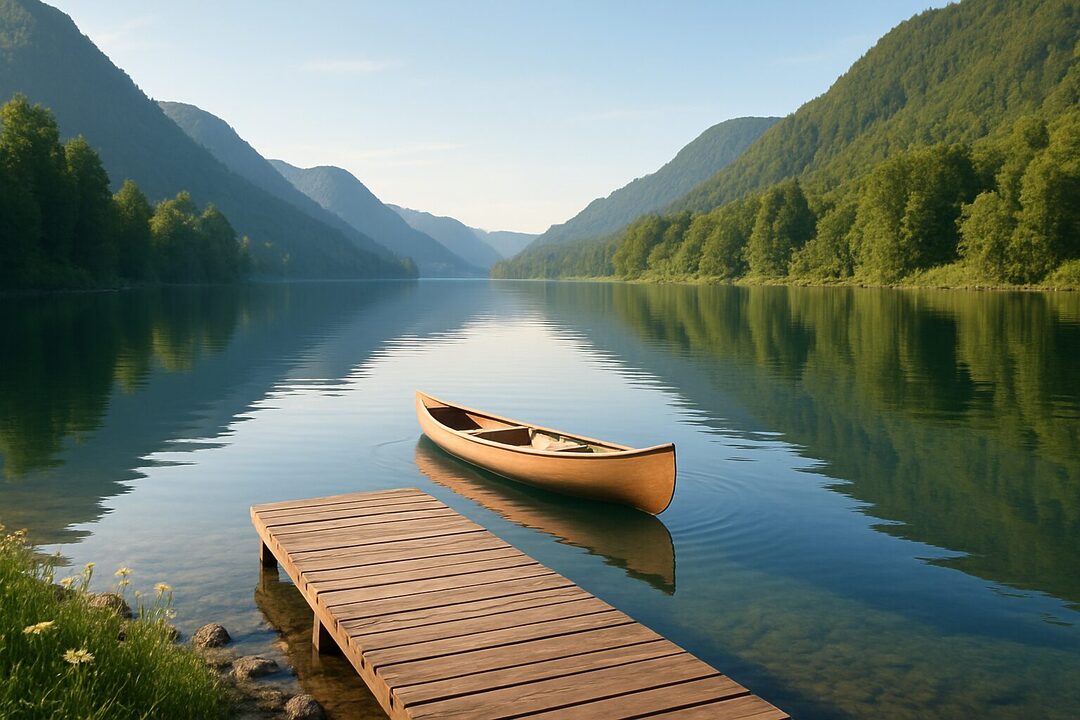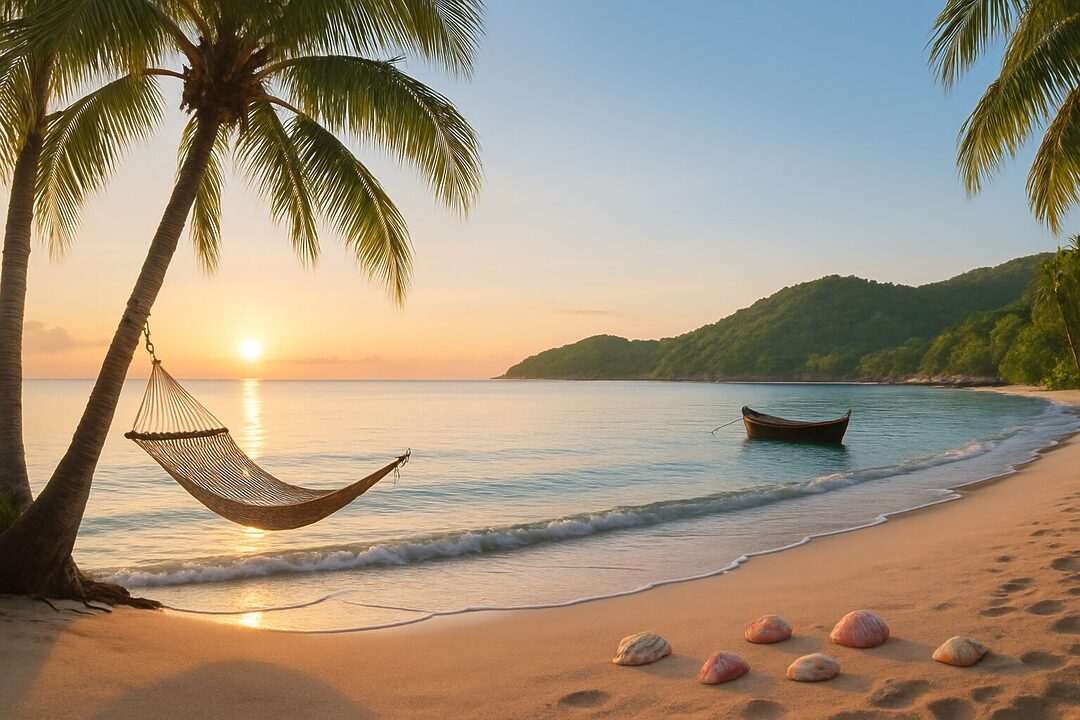In a world where speed often dictates our choices, travel is undergoing a profound shift, embracing a philosophy that prioritizes depth over haste. As the travel industry evolves, slow travel emerges as a transformative movement that challenges traditional tourism’s fast-paced itineraries by offering a more mindful, immersive, and sustainable approach to exploring the world. This revolutionary change reflects a growing awareness among travelers seeking meaningful connections with local cultures, environments, and communities, rather than simply ticking off a checklist of tourist hotspots.
With rising concerns around environmental impacts and cultural preservation, slow travel presents a pathway toward reducing carbon footprints and fostering global respect. Data reveals a significant trend: longer stays and immersive experiences are becoming the norm, as travelers increasingly desire to engage authentically—favoring quality over quantity. This preference not only benefits the traveler’s wellbeing but also contributes economically and socially to host destinations, creating a win-win scenario for all parties involved.
The rise of slow travel also coincides with advancements in the travel industry: airlines introduce flexible fare options, rail travel gains popularity as a low-carbon alternative, and accommodation providers adapt by offering longer stays with local cultural integration. Tour operators like Intrepid Travel and Wanderjaunt emphasize deeper community connections, further validating slow travel’s appeal.
As the global tourism landscape continues to evolve, slow travel stands out as more than a trend—it is shaping the future of how people explore the world responsibly, sustainably, and in harmony with local lives and natural environments.
Understanding the Principles and Benefits of Slow Travel
Slow travel is rooted in a simple yet profound mindset: prioritizing quality and connection over the sheer number of destinations visited. This form of travel encourages spending extended periods in one place to truly experience local rhythms and cultures. Unlike traditional tourism, which often involves rushed visits and superficial encounters, slow travel nurtures authentic engagements.
At its core, slow travel emphasizes immersive experiences such as:
- Living like a local by staying in neighborhoods rather than tourist hubs, often via Airbnb or local home stays.
- Sampling regional cuisine rather than international chains, fostering deeper culinary appreciation.
- Using sustainable transportation methods such as rail or bike, exemplified by the increasing popularity of multi-destination rail passes through Rail Europe.
- Participating in local events, workshops, or community projects that allow cultural exchange and mutual respect.
The benefits of adopting slow travel extend beyond personal enrichment. Environmentally, slower journeys lower carbon emissions by reducing the frequency of flights and encouraging greener transit. Socially, longer stays provide economic benefits to local businesses, ensuring tourism dollars support families, artisans, and small enterprises rather than large tour conglomerates. Intrepid Travel, a leader in responsible travel, reports enhanced satisfaction among travelers who spend more days immersed in local culture, noting a 43% increase compared to traditional itineraries.
These advantages are well-documented in studies and reports from organizations such as the International Tourism Association, which identified a 34% increase in trips longer than seven days post-pandemic. The General Sustainable Travel Report from Booking.com in 2024 showed that 68% of travelers preferred authentic cultural experiences over quantity. These numbers reflect a global desire to transform tourism into a force for good rather than just entertainment.
| Aspect | Traditional Tourism | Slow Travel |
|---|---|---|
| Duration of Stay | 3-4 days average | 7+ days preferred |
| Transportation Mode | Frequent flights | Rail, bike, walking |
| Accommodation | Hotels, resorts | Local stays, Airbnb, eco-lodges |
| Cultural Engagement | Superficial visits | Deep local participation |
| Economic Impact | Tour operators, large businesses | Local economy stimulation |
Slow travel encapsulates the essence of “travel local,” which enhances not only the traveler’s experience but also the host community’s welfare. For travel enthusiasts who are mindful of their impact, embracing slow travel can be a profound act of respect and responsibility, ensuring tourism contributes positively to the world.
For those eager to explore more about embracing slow travel as a form of responsible tourism, resources such as Responsible Yatri’s guide on slow travel provide valuable insights and actionable tips.

How Slow Travel is Revolutionizing Sustainable Tourism
The shift towards slow travel is intrinsically linked to the broader movement of sustainable travel. As environmental awareness grows, tourists and industry players alike seek ways to diminish tourism’s ecological footprint while enriching cultural appreciation.
Slow travel demonstrates several sustainable tourism benefits:
- Reduced Carbon Emissions: Choosing rail over flights and longer stays decreases frequent air travel, a major contributor to climate change.
- Waste Reduction: Immersive stays often involve cooking and shopping locally, reducing reliance on single-use packaging and fast food chains like Ben & Jerry’s convenience options often found in traditional tourist sites.
- Support of Conservation: Slow travelers often contribute to local preservation through eco-tours and supporting ecologically minded enterprises like EcoTour and Serenity Trips’ sustainable serenity trips.
- Community Empowerment: Longer visits enable travelers to connect meaningfully with communities, respecting traditions and fostering cultural exchange.
This alignment of slow travel with sustainable travel practices is key to reshaping global tourism. Globally recognized certifications such as the Slow Destination certification by Green Destinations and EarthCheck evaluate the sustainability of communities by considering criteria like public transport viability and cultural preservation.
The industry itself responds accordingly. Airlines like KLM and Lufthansa have introduced flexible fares that encourage longer stays with benefits like extended return dates and stopovers rather than rushed trips. Likewise, hotels such as Marriott’s Home & Villas program and Hilton’s Extended Discovery offer accommodations designed for multi-day immersive travel, complete with local host interactions and kitchen facilities to encourage local shopping and cooking.
Tour operators also champion this paradigm. Companies like Wanderjaunt and Intrepid Travel reduce packed daily activities by 40%, emphasizing quality, leisure, and community integration. According to the Adventure Travel Trade Association, 78% of travel companies have increased trip lengths since 2022 to accommodate this emerging preference.
| Industry Initiative | Action | Impact |
|---|---|---|
| Airlines (KLM, Lufthansa) | Flexible fares with stopovers | Encourage longer, less rushed trips |
| Hotel Chains (Marriott, Hilton) | Extended stay programs with local integration | Support cultural immersion & local economy |
| Tour Operators (Intrepid Travel, Wanderjaunt) | Reduced daily activity count | Enhanced traveler satisfaction & community connection |
| Rail Transport (Rail Europe) | Multi-destination rail passes | Low-carbon travel options rise 56% |
Such efforts not only make slow travel more accessible but also position it as the pillar of future tourism that respects both planet and people.
Visitors can explore further advice on sustainable serenity trips and local cultural experiences via platforms like Serenity Trips and deepen their awareness on how mindful travel benefits well-being and environment.
Economic and Social Impacts of Embracing Slow Travel in Local Communities
Slower travel does not merely shift individual priorities; it holds profound implications for local economies and sociocultural dynamics. When travelers extend their stays and engage closely with communities, they help redistribute wealth more equitably and reinforce cultural preservation.
Studies indicate that slow travelers spend an average of 60% more in local economies than conventional tourists. This is largely due to their patronage of small businesses, from family-run restaurants and artisan shops to independent guides and accommodations such as Airbnb hosts or smaller eco-lodges.
Beyond direct spending, slow travel nurtures social benefits:
- Preservation of Traditions: Travelers partake in local crafts, culinary traditions, and festivals, supporting cultural longevity.
- Community Involvement: Longer visits allow for volunteer opportunities and collaborative projects, strengthening social cohesion.
- Capacity Building: Increased interaction fosters transfer of knowledge and skills between travelers and residents, especially in rural or less-visited areas.
Recognizing these impacts, organizations have developed certifications such as the Slow Destination to support communities committed to responsible tourism growth. This approach provides measurable standards for sustainable economic benefit combined with cultural and environmental care.
| Economic Aspect | Traditional Tourism | Slow Travel |
|---|---|---|
| Average Spend Per Visitor | Lower, focused on major attractions | 60% higher, distributed locally |
| Type of Businesses Supported | Chain stores, international brands | Small, family-owned, artisanal |
| Community Engagement | Minimal, usually brief visits | High, with participation in cultural events |
| Cultural Preservation | Vulnerable to commodification | Actively supported and valued |
Ethically minded travelers now rely upon influencers and experts such as Nomadic Matt, who advocate for travel philosophies that uplift local cultures while remaining conscious of environmental footprints. This shift creates a feedback loop where the demand for responsible travel encourages destinations to invest in sustainable practices.
Those who wish to explore hidden gems and serene landscapes untouched by mass tourism can find inspiration and practical advice at Serenity Trips’ collection of hidden gems, enhancing both mental health and cultural appreciation through thoughtful itineraries.
Practical Tips for Embracing Slow Travel on Your Next Journey
For travelers inspired to adopt a slower pace, integrating slow travel principles requires intentional planning and a shift in mindset. Here are practical strategies to embed slow travel effectively:
- Book Longer Stays: Choose accommodations like Airbnb or Marriott’s Home & Villas that support extended visits, allowing you to settle and engage deeply with the local environment.
- Opt for Sustainable Transportation: Favor trains, bikes, or walking tours. Rail Europe’s multi-destination passes exemplify convenient low-carbon options.
- Connect with Locals: Participate in workshops, cooking classes, or community-led tours offered by operators such as Intrepid Travel or Wanderjaunt.
- Learn the Language and Culture: Dedicate time to appreciating the nuances of your destination’s customs, stories, and daily life, enriching your overall travel experience.
- Support Local Businesses: Buy handmade goods, dine at family-run restaurants, and stay in lodgings that prioritize responsible travel practices.
- Practice Mindfulness and Presence: Slow travel encourages digital detox and reflection; embracing serenity trips and wellness travel concepts keeps the journey balanced.
Mindful travelers can further enhance their experience by consulting specialized resources such as Serenity Trips on the essence of slow travel or explore their local cultures serenity trip curated itineraries.
| Slow Travel Practice | Action Steps | Anticipated Outcome |
|---|---|---|
| Extended Stay | Book accommodations for 7+ days | Deep cultural immersion and stress reduction |
| Sustainable Transit | Use rail, bike rentals, or walk locally | Lower carbon footprint, richer local experience |
| Community Engagement | Attend local events, workshops | Meaningful connections and cultural appreciation |
| Mindfulness | Limit digital distractions, journal | Enhanced personal well-being and reflection |
Adopting these recommendations can reshape travel from a hurried checklist into a restorative journey. Resources such as Nomadic Matt’s travel guides offer insights on embracing this slower approach in various global contexts.
Future Trends and Innovations Shaping Slow Travel in the Tourism Industry
Looking ahead, slow travel’s growing momentum prompts innovations and future trends that may redefine how humanity explores the globe. Key developments forecasted to influence this shift include:
- Technology Supporting Immersion: Though slow travel advocates mindfulness and disconnection, augmented reality (AR) and personalized apps are designed to deepen cultural insights and local interactions without overwhelming speed.
- Hybrid Remote Work and Travel: With remote work becoming mainstream, platforms like Wanderjaunt enable travelers to stay longer at destinations blending work and leisure in relaxed timelines.
- Expansion of Eco-Friendly Accommodations: The demand for eco-lodges and “slow homes” linked to platforms such as Airbnb and Marriott’s Home & Villas is booming.
- Sustainable Mobility Infrastructure: Investment in green transport networks supports riding slow roads by train or bike, reducing the carbon footprint and enriching scenery appreciation.
- Personalized Cultural Experiences: Tour operators increasingly tailor trips to individual preferences, emphasizing deep community involvement and fewer rushed activities, evident in companies like Intrepid Travel.
The emerging paradigm also integrates mental wellness, recognizing that slow travel contributes positively by combating digital burnout and promoting mental clarity. Platforms such as Serenity Trips’ simplicity routes suggest that the future of tourism will marry serenity, learning, and sustainable adventure.
| Trend | Description | Potential Impact |
|---|---|---|
| Tech-Enabled Cultural Immersion | AR guides and apps provide layered experiences without rushing | Richer understanding and deeper connection |
| Work and Travel Integration | Remote work-friendly accommodations and programs | Longer stays, balanced lifestyle |
| Eco-Friendly Accommodations | Growth in sustainable housing options | Reduced environmental impact |
| Sustainable Transport Infrastructure | Investment in green mobility, slow roads | Lower carbon footprint, immersive travel |
| Customizable Tours | Tailored trips focusing on community engagement | Enhanced traveler satisfaction |
To explore the innovation momentum further and practical applications of these trends, readers can consult articles such as Travel and Tour World’s analysis and Taylor’s University perspective on slow travel’s future.

As a 34-year-old Yoga Teacher, I am passionate about guiding others on their journey to mindfulness and well-being. With years of experience in various yoga styles, I create a welcoming environment that encourages personal growth and self-discovery. Join me in exploring the transformative power of yoga.


